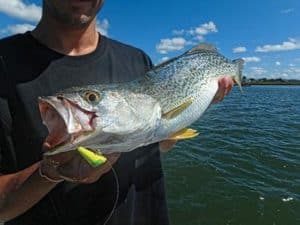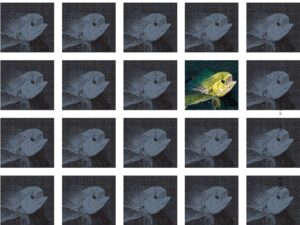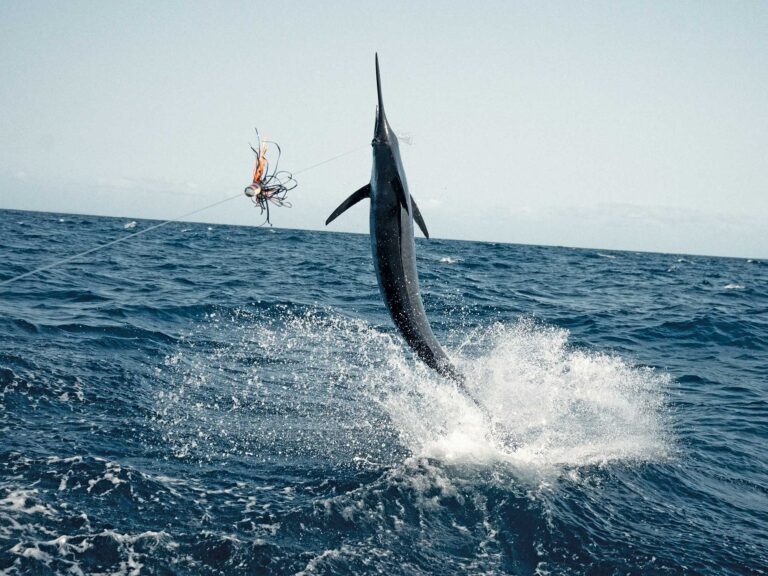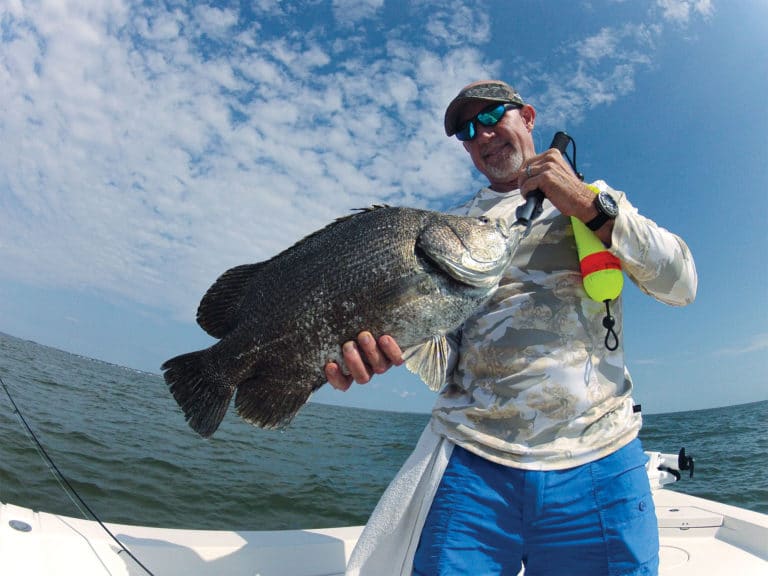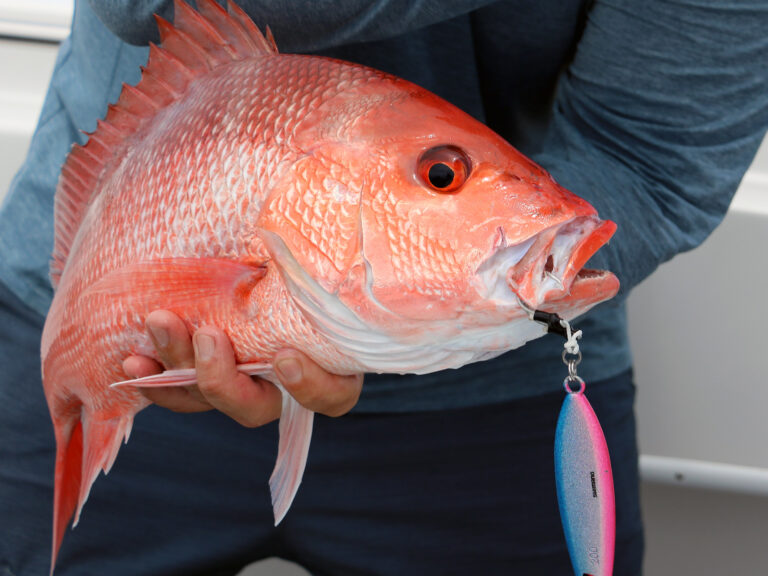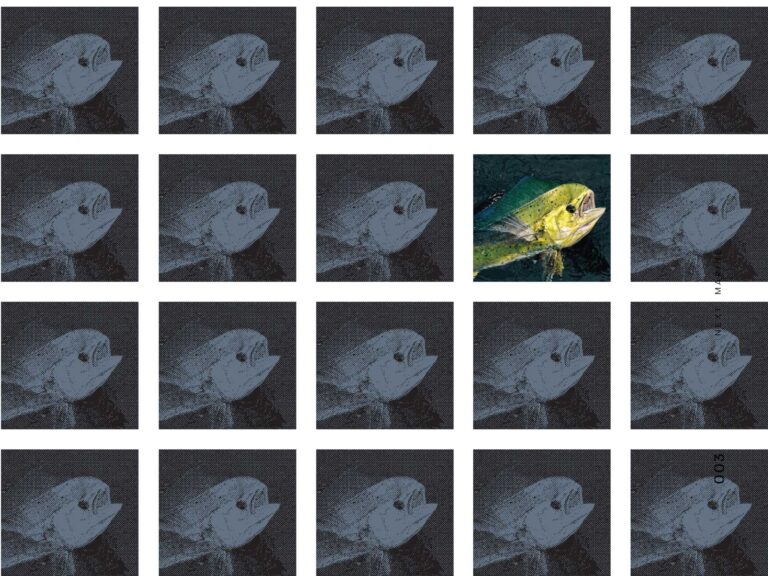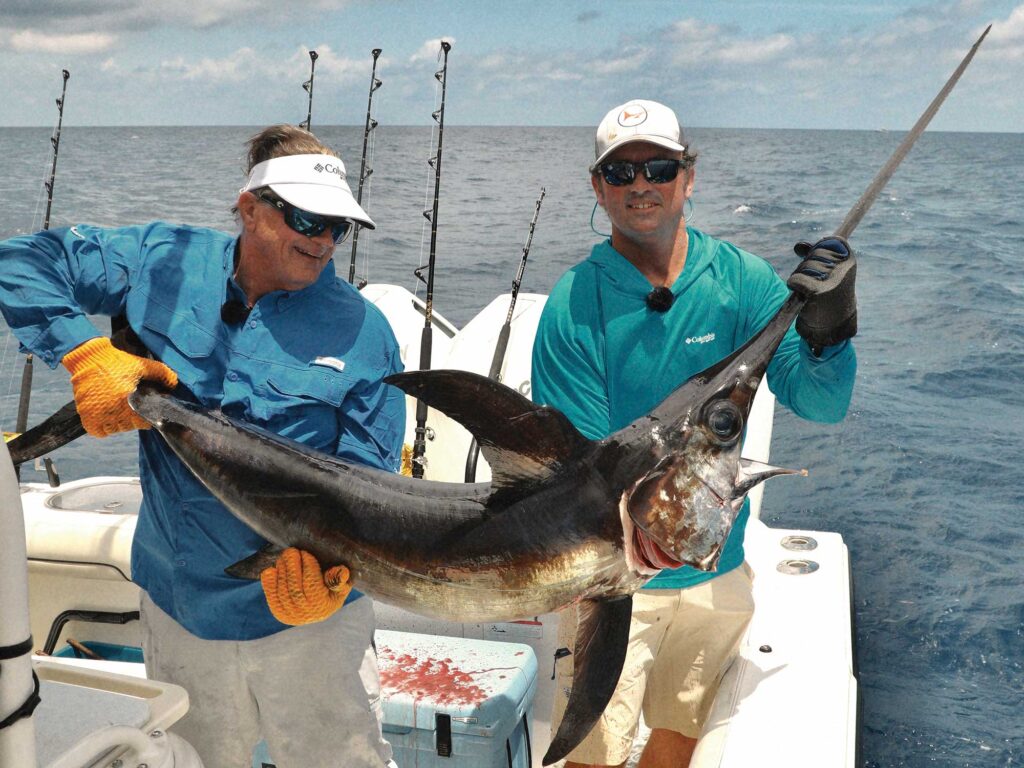
We were 70 miles offshore of Destin. Intently focused on the rod tip for a bite, Capt. Adam Peeples and I were slow-drifting a skirted strip bait 1,500 feet deep for swordfish. That’s when the rod tip straightened up from a lack of weight. A swordfish was swimming upward with the bait. I rushed to the outfit, reclaimed the slack, came tight to the fish, and settled into battle. Just shy of an hour later, Peeples did the gaffing honors on a memorable fish.
Knowing precisely what to watch for combined with a keen sense of feel for when to set the hook resulted in us going 5 for 7 on swords that day. A nonseasoned angler would likely have neglected the subtle rod-tip hint and missed the fish.
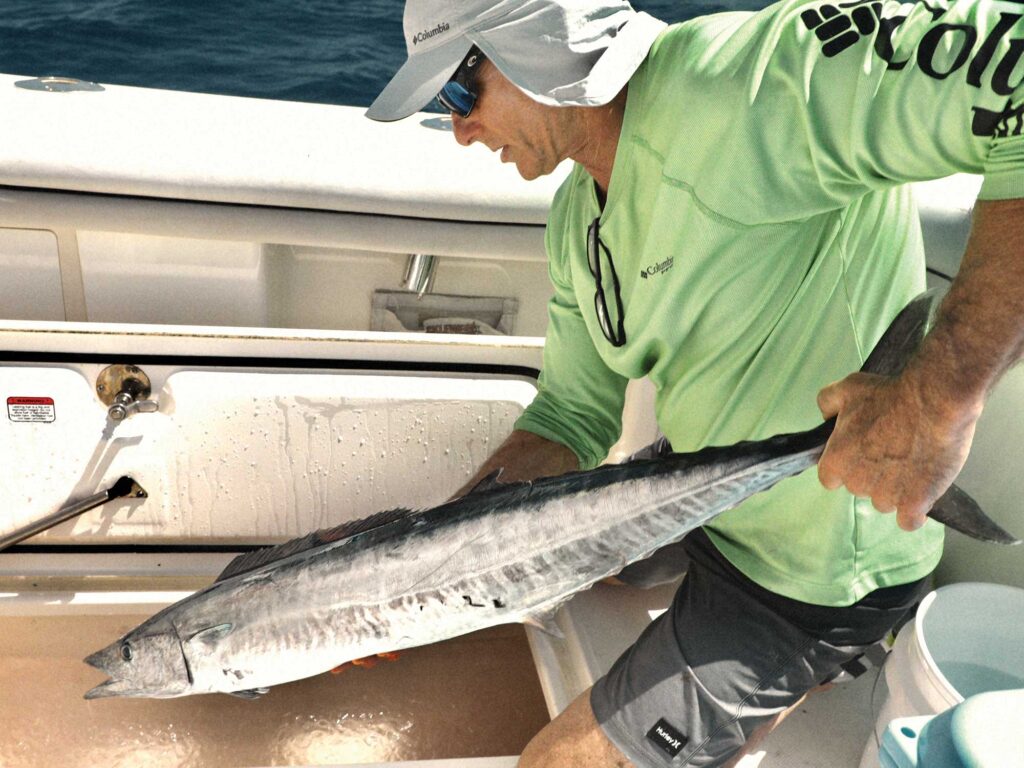
Acquire the Feel
There’s no substitute for time on the water to master the skillset. This encompasses, among other things, feeling where a bait is within the water column, if a lure is performing enticingly, when a fish picks up a bait, and the right time to set the hook.
No instant infusions here. However, there are basic foundations on which to build upon. Developing a rhythm is at the top of this list. No matter if the quarry is striped bass, snapper or billfish, focus on the rhythm of your tactic and how it’s performing in the water.
When soaking bottom baits, for example, the offering should remain touching bottom, not hovering above it. Confirmation is as simple as feeling the sinker contacting bottom. When that feel is lost, occasionally free-spool to reacquire it. The goal is to maximize the soak time of a bottom bait. However, free-spooling too much line to hold bottom, an issue with strong currents, diminishes sensitivity. The less aggressive the line angle in bottomfishing, the better an angler’s feel and hookup percentages. It’s a fine balance, especially when battling strong currents and winds.
Rock Around
Maintaining a precise feel of a bottom bait or jig is paramount on aggressive structures. This advanced skillset involves the rolling of a sinker or jig over rocks and jagged bottom, never letting it settle long enough to snag. This is sensitivity management at the next level.
Last season, I went tautog fishing off Cape May with Capt. Tom Daffin. Anchored, we manipulated two-hook sinker rigs, baited with crabs, into nooks and crannies of offshore wrecks. In this type of fishing, if your bait isn’t infiltrating these structures, you might as well take a sandwich break.
Successfully baiting these ’togs demanded constant yet deft raises of the rod tip to feel our sinkers rolling over, dropping into and coming out of crevices. We scored over 30 tautogs, including a personal best 13.8-pounder. I’ve only ’tog fished twice, but my bottomfishing experience made it easy to adapt on these deep structures.
Read Next: Using a Smartwatch to Catch More Fish
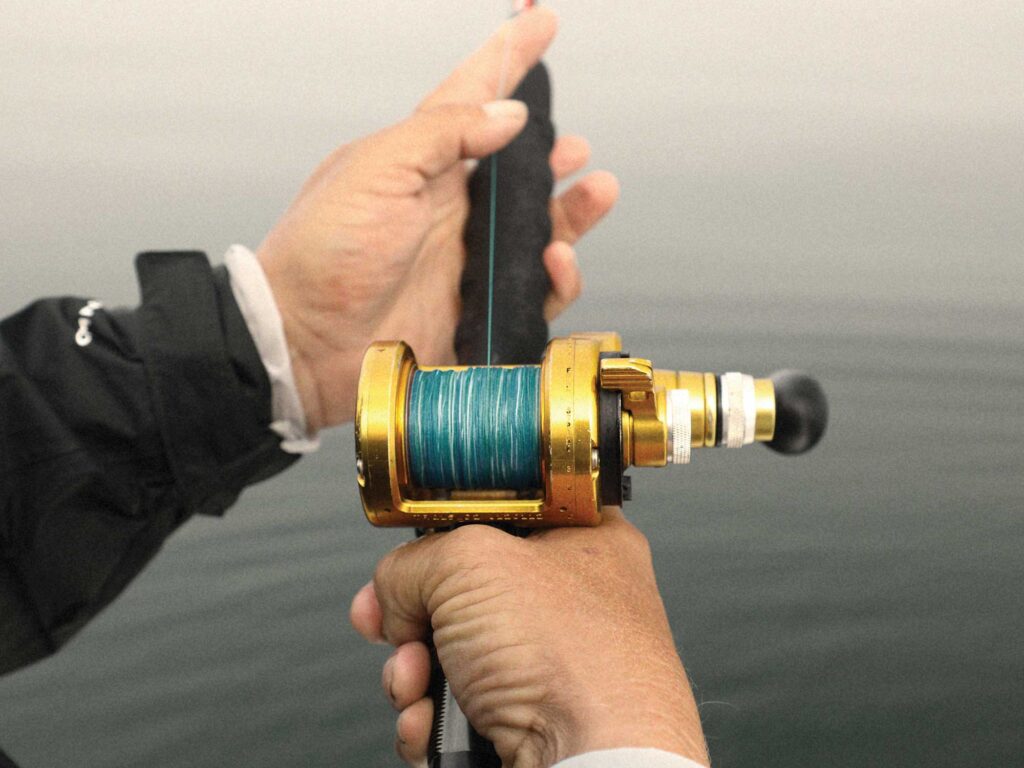
Hook-Set Help
Whether bottomfishing, chunking or live-baiting, pay close attention to subtle differences in the rhythm of the rod. Like my earlier swordfish example, if there’s a slight bump or tap on a rod, or a live bait suddenly becomes more energetic, there’s a fish homing in on it. Slight taps could be a fish pushing or pecking at a bait—mutton snapper are known for this, as are snook, tarpon, and even striped bass when not aggressively feeding.
To counter nonaggressive pickups, try leaving a rod in a gunwale holder. When bottomfishing, chunking or live-baiting with inline circle hooks, once a fish commits, it’ll run off with the bait, pull the line tight, bend the rod, and plant the hook into its own jaw. Gone is the second-guessing over when to strike a persnickety fish.
For manual hook-sets, each scenario brings its own unique set of circumstances. However, after a fish moves off with a bait, be ready to strike as the line suddenly speeds up. Should a miss occur, immediately free-spool; if the bait, or a portion of it, remains intact, a second opportunity may arise from that fish. Once again, strike as the fish speeds off with the bait. This tactic also plays well with wahoo and king mackerel, which slash their prey and circle back for the remains.
Thumbing Pelagics
When dropping back to a billfish, sight also plays a role. White marlin, arguably the most challenging billfish to hook, are keen at sensing the slightest resistance during a drop-back.
On the strike, free-spool the bait while extending the rod tip toward the fish and apply just enough thumb pressure to avoid a backlash. Once the line speeds up, advance the drag, wind rapidly, and slowly lift the rod as the fish charges off. The circle hook should set.
During a miss, raise the rod high overhead, reel the bait back to the surface, and wait for a second shot. Striking while the fish is heading sideways to or in the opposite direction of the boat increases successful hookups, hence the sight advantage.
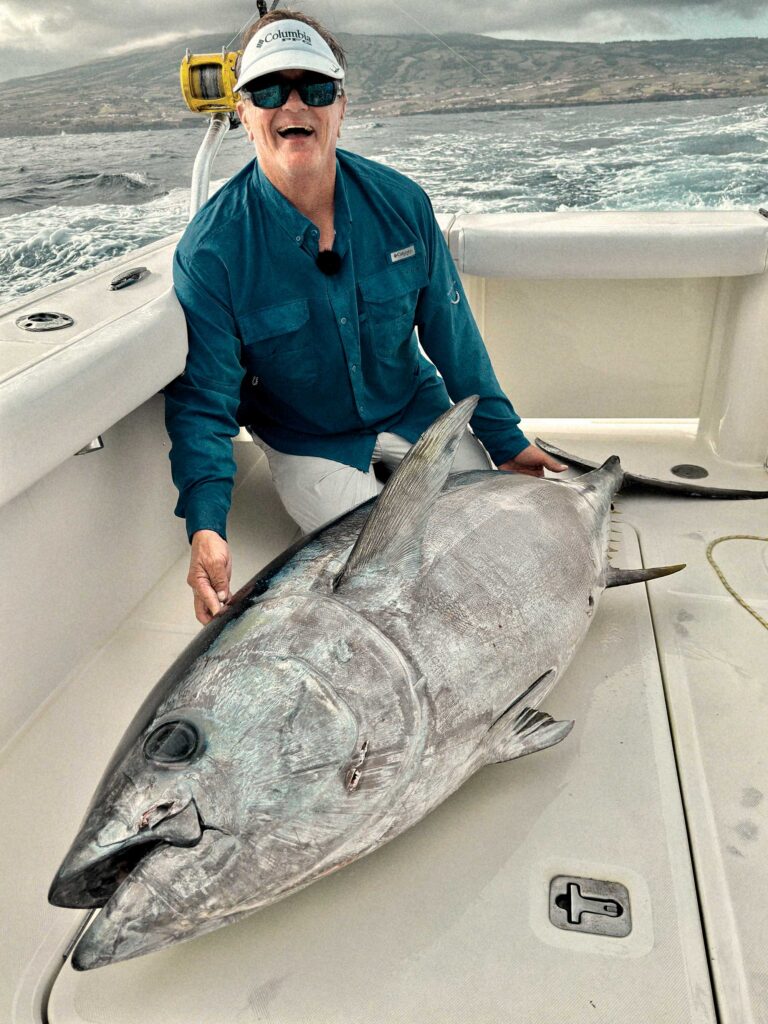
Don’t Choke the Fight
The feel deal carries over into the fight. Whereas boat flipping is an option with smaller fish like schoolie mahi, tripletail and bluefish on overpowered tackle, beating larger and more powerful adversaries demands knowing the limits of your tackle, having a rhythm for the fight, and maintaining that rhythm right to gaff or release.
Keep adequate pressure on the fish, but let it set the pace initially. As the fight progresses, a feel for the pace of the fight and tackle pressure becomes evident. Remain smooth and ready to counter any sudden hard surges, especially when a trophy fish nears the boat.
Recently, I spent 90 tough minutes fighting a 220-pound bigeye tuna off Portugal’s Azores. The fish nearly came within gaffing range three times before blistering off the reel’s 100-yard top shot. Each time the fish neared the boat, I felt like really stepping up the pressure—but I knew better. We boated our fish, and the feel of sore muscles later that evening was a darn good one.


